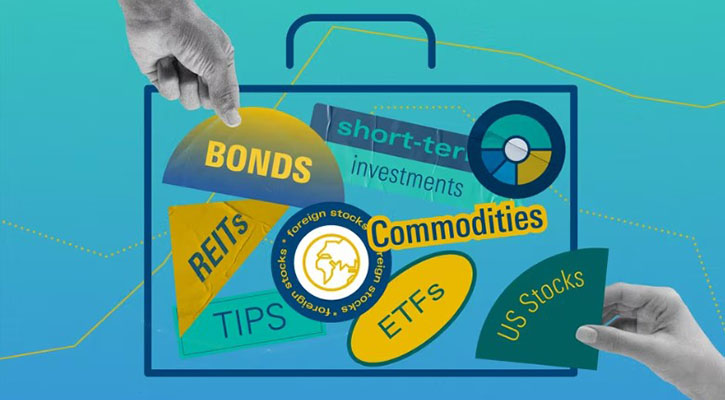Over the past year, many traditionally reliable dividend payers haven't been quite as reliable as they had been in the past. Financial companies have historically been one of the biggest sources of dividends in the market, and many were forced to cut or even eliminate their dividends as their need for capital rose amid the credit crisis.
Even so, the recent market environment has been a true stress-test for companies in all sectors, and if a company has managed to maintain or even grow its dividend during this period, it's a very strong indicator of its financial health. Whether you're looking to dividends for stable returns, for current income, or as a way to gauge a company's financial health, they can be an important tool in an investor's arsenal when they're understood and used appropriately.
Dividends
When a company generates revenue beyond that which it needs to sustain
its business, it can do several things with its excess earnings, or
profit. It can reinvest those earnings back into the company in an
effort to stimulate further growth, undertake share buybacks, or pay a
dividend to its shareholders. The size and form of the dividend as well
as the frequency with which it's paid are determined by the company's
board of directors. Although dividends are most commonly paid in cash,
they can also take the form of company stock or property. Individual
companies typically pay dividends to shareholders at regular intervals
throughout the year. If a fund has an income share class then typically
it should pass dividends received on to investors in the form of a
distribution. Dividend-paying funds and exchange-traded funds tend to
pay shareholders both during the year from the dividends paid by their
underlying companies and at year-end from the capital gains that the
fund has made over the course of the year.
The pros of dividend-paying companies
For mature, stable companies, dividends are typically considered a sign
to shareholders of a company's commitment to fiscal discipline. When
such firms begin paying dividends, they often prefer to keep them steady
or growing in order to maintain investor confidence.
Committing to dividend payments has important implications for businesses. In addition to signaling to shareholders that the company is committed to generating an annual return, it can also bring discipline to the internal budgeting process. Knowing that shareholders value a steady or growing dividend, management teams prefer not to disturb it if they don't have to. Having that money already set aside to go back to shareholders also limits poor capital allocation decisions, such as many of the ill-conceived acquisitions that took place in the 1990s.
With this in mind, fund managers looking for high-quality companies often use a company's dividend history to help gauge its financial strength in addition to generating income for their funds.
Another reason to consider dividend-paying companies for a portion of a portfolio is their tax treatment: In the UK, total dividend income at or below £37,400 for the tax year 2009-2010 will be taxed at just 10%, while dividend income above this basic rate tax limit will be subject to 32.5% tax.
It doesn't matter whether you get dividends from a company, unit trusts or open-ended investment companies, as all dividends are taxed the same way. Interest distributions from unit trusts and open-ended investment companies, however, are taxed at the rates for savings income--either 20% or 40% depending on your overall taxable income.
The cons
Although dividend-paying companies have plenty of appeal, it's important
to note that companies are not obligated to pay dividends or to keep
them at specific levels. The board of directors has the right to cut or
eliminate a dividend if it believes that it is in the company's best
interest to do so. So, while dividends of mature companies tend to be
stable, they are not guaranteed. As noted earlier, many dividend-paying
companies, especially those in the hard-hit financials sector, struggled
to make their payouts in 2008. As the economy softened and fell into a
recession and as the credit crisis rippled through the stock market,
companies found themselves increasingly in need of capital. With
earnings falling and the credit markets frozen, cutting dividends helped
provide some companies with capital when their survival was on the line.
Cutting dividends can also weigh on a firm's share price. Struggling financials that cut their dividends in 2008 often saw their share prices fall further. As dividends are cut, dividend-focused investors have had to determine whether or not those cuts, which may be prudent business decisions, erode the attractiveness of the stock. Sometimes investors react fervently and negatively to dividend cuts, excessively punishing fundamentally-sound companies for making prudent capital-allocation decisions, although that's not always the case.
There can also be risk at the opposite end of the spectrum. If a company has a very high dividend yield, it's worth investigating why that is. Not all dividend-paying companies are high-quality businesses, and it can be dangerous to chase high-yielding stocks without understanding companies' financial positions. Dividend yield is calculated by dividing a company's annual dividends per share by price per share of stock. A declining stock price leads to an increasing dividend yield, but because stock price movements often front-run fundamental changes, that may be the market's way of signaling that the company's dividend is in danger of being cut.
Finally, some market participants consider a company's decision to pay a dividend as a signal that it's slowing down. As a firm moves beyond its emerging-growth phases and as fewer opportunities for achieving high business growth remain unearthed, it settles into a mature or slower growth state. At this stage, companies tend to have saturated their markets and simply don't have many unexplored opportunities for organic growth. Investors in search of high-octane growth may view a company's decision to pay a dividend as an admission that the firm is no longer growth-oriented; in fact, dividends were practically stigmatised in the tech bubble of the late-1990s as the market wanted nothing but go-go growth. That was a distinct market, however, and more often than not the idea of steady income from a stable company is one that appeals to investors.
The role of dividend-paying stocks in your portfolio
High-quality dividend-paying stocks can be a great source of steady
return in many markets and can serve to anchor an equity portfolio and
boost returns through income. Funds, ETFs, and individual companies can
all be great ways to gain access to dividends. If you're buying a fund
or ETF, it's important to bear expenses in mind when selecting
dividend-payers. Expenses are deducted from yield, and therefore a
high-expense vehicle can undermine the dividend advantages of your
selection.










.jpg)













